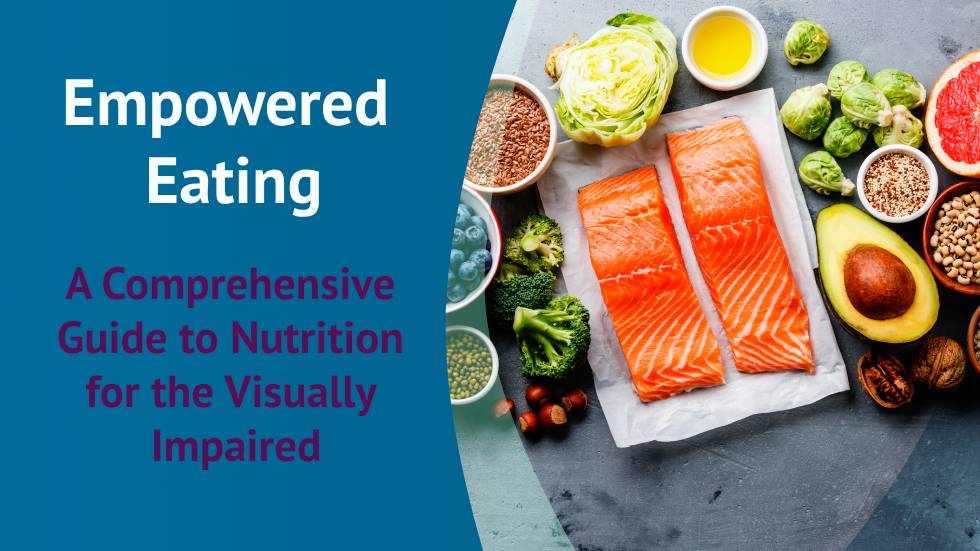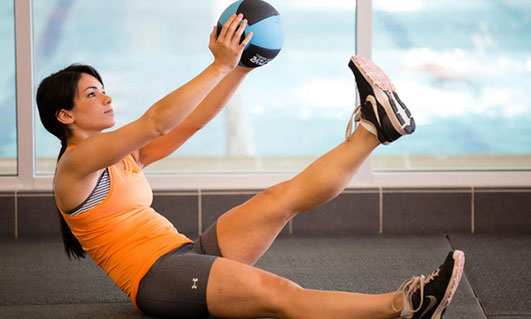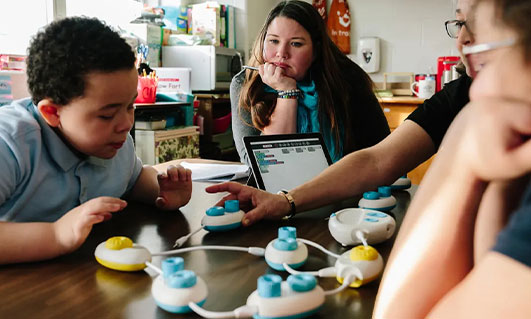
Maintaining a balanced diet is essential for everyone, but for visually impaired individuals, there are unique challenges and opportunities to consider. This blog aims to provide practical tips and strategies for achieving optimal nutrition, empowering individuals to make healthy choices with confidence.
Understanding Nutritional Needs
Nutrition is about more than just eating; it’s about fueling your body with the right nutrients. A balanced diet should include:
Fruits and Vegetables: Aim for a variety of colors and types. Fresh, frozen, or canned options are all good. Try to include a range of vitamins and minerals.
Whole Grains: Incorporate foods like brown rice, whole wheat bread, and oats. These provide fiber, which is vital for digestive health.
Protein Sources: Include lean meats, fish, eggs, beans, and legumes. Protein is crucial for muscle repair and overall health.
Dairy or Dairy Alternatives: Opt for low-fat or fat-free options. For those who are lactose intolerant, consider almond or soy milk fortified with calcium and vitamin D.
Healthy Fats: Focus on sources like avocados, nuts, seeds, and olive oil. These fats support heart health.
Tips for Meal Preparation
Organize Your Kitchen: Use labeled containers and accessible storage solutions. Consider tactile labels or braille to help identify different foods.
Utilize Technology: Smartphone apps and kitchen gadgets designed for the visually impaired can assist with meal planning and cooking. Voice-activated devices can also be helpful.
Practice Safe Cooking: Use adaptive tools like cutting boards with spikes to hold food in place and utensils with larger handles. Always use sound, smell, and texture to assess food readiness.
Incorporate Meal Prepping: Prepare meals in advance to ensure balanced eating throughout the week. Portion out meals in containers, making it easier to grab and go.
Navigating Food Labels
Understanding food labels can be a challenge. Here are some tips:
Focus on Key Information: Pay attention to serving size, calories, and nutritional content. Most packaged foods provide information in standard formats that can be learned through practice.
Learn Common Terms: Familiarize yourself with terms like “low-fat,” “sugar-free,” and “whole grain.” This knowledge will help you make informed choices.
Use Braille or Tactile Labels: If you read braille, consider labeling food items to help identify them easily.
Engaging Your Senses
Cooking and eating can be a sensory experience. Here are ways to enhance this experience:
Experiment with Spices: Use herbs and spices to add flavor without extra calories. Familiarize yourself with different scents and tastes to discover your preferences.
Incorporate Textures: Include foods with different textures to create a more satisfying meal. Consider crunchy vegetables, creamy sauces, and chewy grains.
Mindful Eating: Focus on the flavors, aromas, and textures of your food. This practice can enhance your eating experience and help prevent overeating.
Seeking Support
Consult a Nutritionist: Consider working with a nutritionist familiar with the needs of visually impaired individuals. They can provide personalized guidance.
Join Support Groups: Engaging with community groups or online forums can provide motivation and support. Sharing experiences with others can lead to new ideas and strategies.
Family Involvement: Involve family members in meal planning and cooking. This can foster a supportive environment and make mealtime more enjoyable.
Conclusion
Nourishing your body is essential for overall health, and with the right strategies, visually impaired individuals can achieve their nutritional goals. By understanding nutritional needs, using adaptive tools, and engaging the senses, you can create enjoyable and balanced meals. Remember, good nutrition is a journey, and every small step counts toward a healthier lifestyle.





